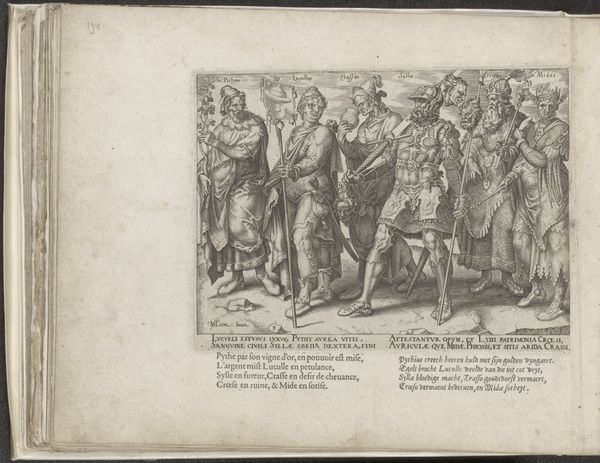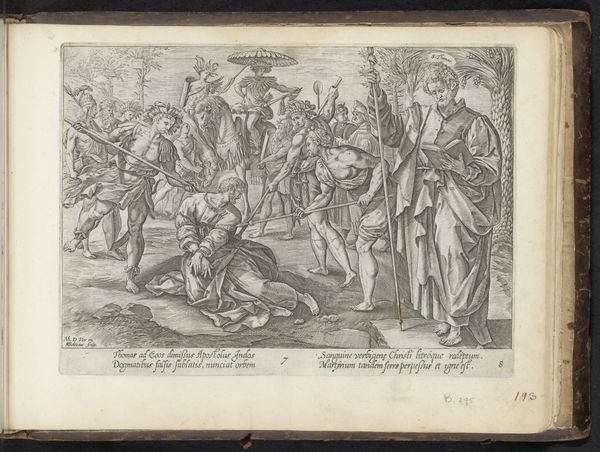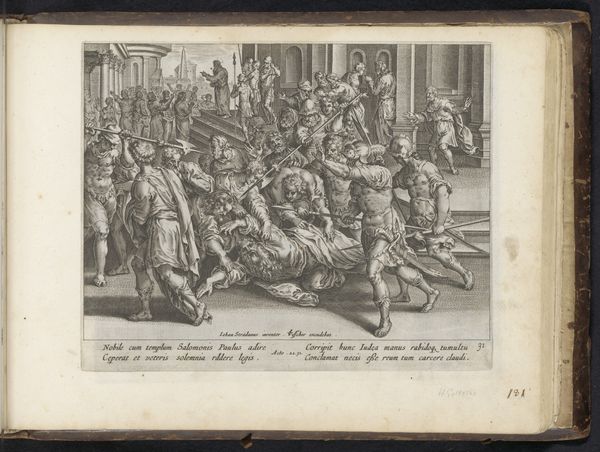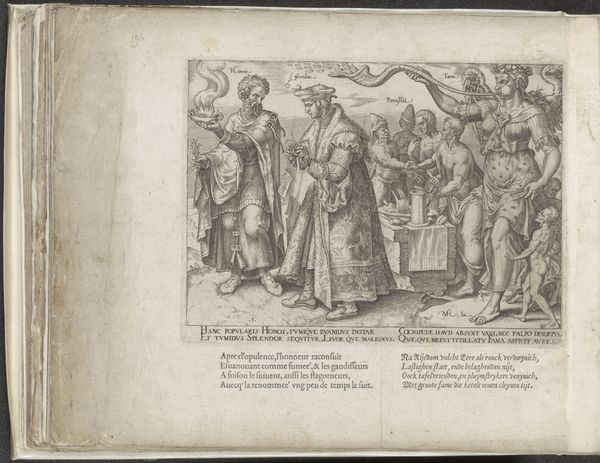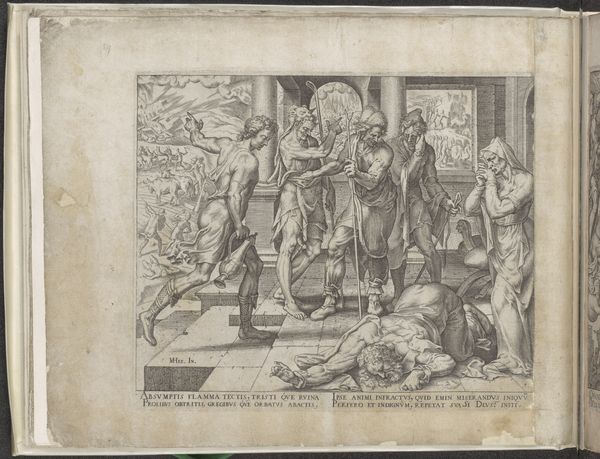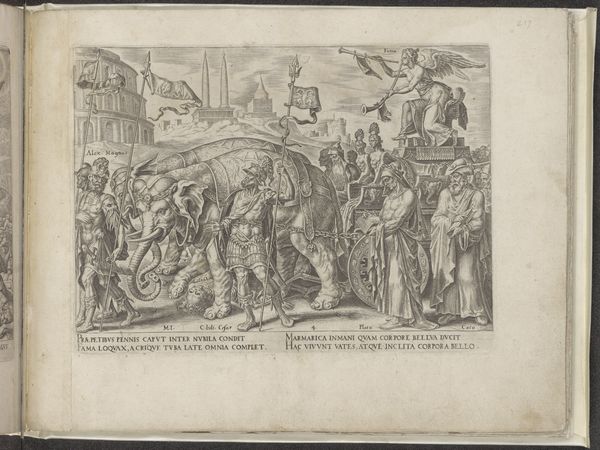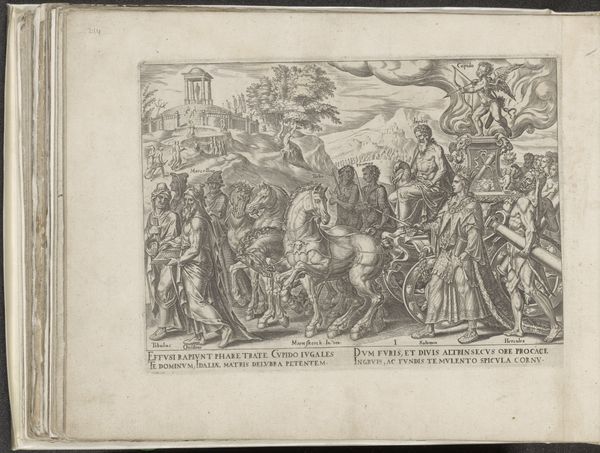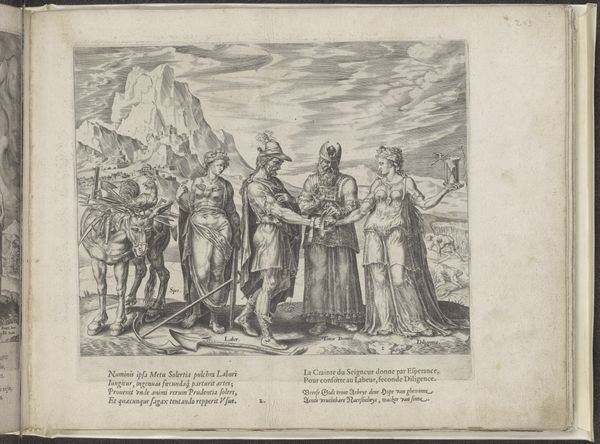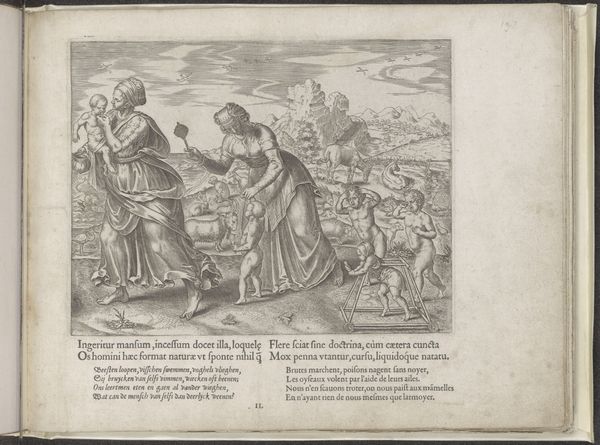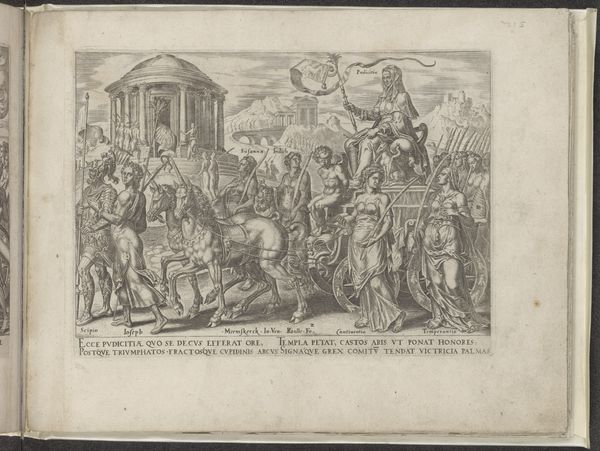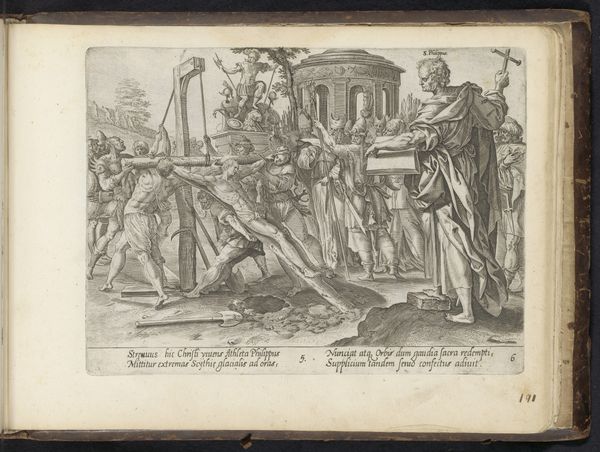
engraving
#
allegory
#
mannerism
#
figuration
#
history-painting
#
engraving
Dimensions: height 170 mm, width 231 mm, height 264 mm, width 343 mm
Copyright: Rijks Museum: Open Domain
Curator: Here we have Philips Galle's engraving from 1563, entitled "Good and Bad Ways to Get Rich." Editor: Wow, that’s quite the parade. Looks like morality took a wrong turn somewhere. There's a blindfolded figure with wings… unsettling. What’s that about? Curator: That figure represents Fortune, often depicted blind to symbolize its fickle and arbitrary nature. It’s an allegory, a common artistic theme during the Mannerist period in the 16th century, designed to convey a moral or philosophical message. Editor: A message alright… Everyone behind her looks… rough. The labor guy is literally sweating riches and then… is that deception personified holding some mask? And then the violence! It feels like a harsh condemnation of... well, most ways of getting ahead, even the hard-working ones. Curator: Precisely. Galle presents a critical commentary on wealth acquisition during a period of immense social and economic change in Europe. The inclusion of figures like "Labor" and "Diligence" suggests the ideal paths but quickly undermines them by showing how easily they can be corrupted. Consider also the figures embodying darker aspects—deceit and naked power— highlighting social ills. It reflects broader societal anxieties about emerging capitalist structures. Editor: So, like, the whole “honest living” versus “crooked dealings” thing is front and center, and really brutally rendered? Like a sixteenth-century meme on ethics. The exaggerated muscles, almost grotesque features, add to that raw impact. Even that figure of "Diligence" feels almost robotic... all work, no soul? Is that what I am suppose to see? Curator: You're not far off. The exaggerated figures exemplify Mannerism, known for its stylized, often distorted forms, and emotional intensity. Galle utilized this artistic language to intensify his critique. He wasn’t simply depicting good and bad; he was exploring a moral decay he perceived within the burgeoning commercial society. Editor: I dig that... even if "dig" sounds ridiculously anachronistic discussing 16th-century art. It really holds up—still grappling with this “how do we get ahead?” question, huh? This print feels super relevant today. Curator: Agreed. Galle’s “Good and Bad Ways to Get Rich” prompts us to consider the ethical implications of wealth acquisition throughout history and even now. It underscores art's role as a tool for societal critique and reflection. Editor: Yeah, like art holding a mirror to some uncomfortable truths, centuries apart... a funhouse mirror perhaps, distorting our image. A stark warning framed like it could be pulled out of todays paper. Food for thought, to say the least.
Comments
No comments
Be the first to comment and join the conversation on the ultimate creative platform.
